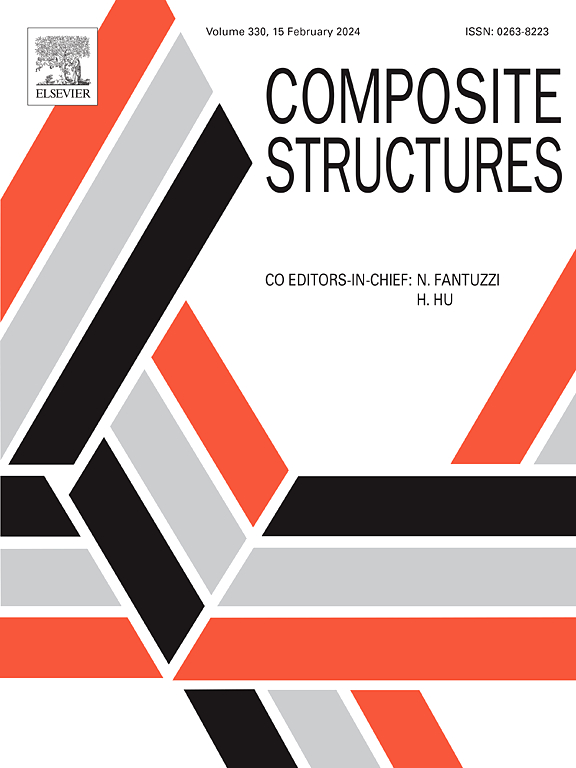Stiffness degradation of woven roving GFRP due to shear and compression fatigue damage
IF 6.3
2区 材料科学
Q1 MATERIALS SCIENCE, COMPOSITES
引用次数: 0
Abstract
Woven roving GFRP is widely used in the structural members of GFRP bridges which are subject to compression or shear stress. However, it is not revealed well about fatigue strength and stiffness degradation under these loading conditions. This study aims to clarify the fatigue strength and residual stiffness of woven roving GFRP under in-plane shear and compression cyclic loading. The specimens were tested at 45 degrees to the fiber direction in the cyclic tensile test, while the compression fatigue test was adjusted to prevent buckling. It is revealed that the in-plane fatigue limit corresponds to the principal strain of about . The compression fatigue limit was 40% of the static compression strength. In-plane shear fatigue damage is predominantly due to matrix cracks, and the stiffness degradation appears in Region I, II, and III. The shear stiffness decreased by 20% before the fatigue failure. On the other hand, in the compression fatigue test, matrix cracks hardly occur, and delamination is dominant. The stiffness degradation of Region I is very limited in compression, and stiffness decreased about 10% before the fatigue failure. Moreover, theoretical models are proposed to express the residual stiffness, and they agree well with the experimental value.
剪切和压缩疲劳损伤导致编织粗纱 GFRP 的刚度退化
编织无捻玻璃纤维增强塑料广泛应用于承受压缩或剪切应力的玻璃纤维增强塑料桥梁结构构件中。然而,人们对这些荷载条件下的疲劳强度和刚度退化并不十分清楚。本研究旨在阐明编织粗纱 GFRP 在面内剪切和压缩循环荷载下的疲劳强度和残余刚度。在循环拉伸试验中,试样与纤维方向成 45 度,而压缩疲劳试验则进行了调整以防止屈曲。结果表明,面内疲劳极限对应的主应变约为 3700×10-6。压缩疲劳极限为静态压缩强度的 40%。面内剪切疲劳破坏主要由基体裂纹引起,刚度退化出现在区域 I、II 和 III。在疲劳破坏之前,剪切刚度下降了 20%。另一方面,在压缩疲劳试验中,基体裂纹几乎没有出现,分层占主导地位。区域 I 在压缩时的刚度退化非常有限,在疲劳破坏前刚度下降了约 10%。此外,还提出了表示残余刚度的理论模型,这些模型与实验值十分吻合。
本文章由计算机程序翻译,如有差异,请以英文原文为准。
求助全文
约1分钟内获得全文
求助全文
来源期刊

Composite Structures
工程技术-材料科学:复合
CiteScore
12.00
自引率
12.70%
发文量
1246
审稿时长
78 days
期刊介绍:
The past few decades have seen outstanding advances in the use of composite materials in structural applications. There can be little doubt that, within engineering circles, composites have revolutionised traditional design concepts and made possible an unparalleled range of new and exciting possibilities as viable materials for construction. Composite Structures, an International Journal, disseminates knowledge between users, manufacturers, designers and researchers involved in structures or structural components manufactured using composite materials.
The journal publishes papers which contribute to knowledge in the use of composite materials in engineering structures. Papers deal with design, research and development studies, experimental investigations, theoretical analysis and fabrication techniques relevant to the application of composites in load-bearing components for assemblies, ranging from individual components such as plates and shells to complete composite structures.
 求助内容:
求助内容: 应助结果提醒方式:
应助结果提醒方式:


